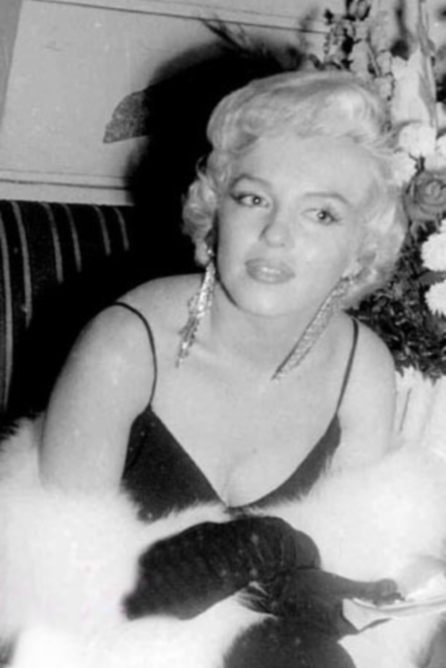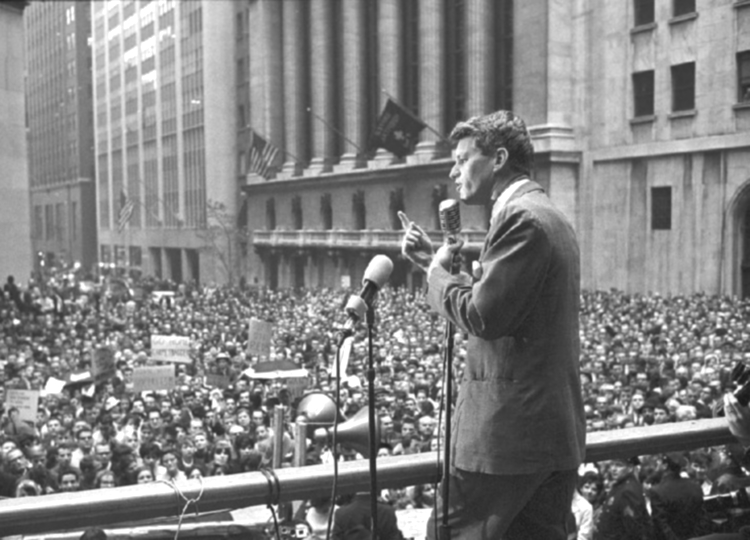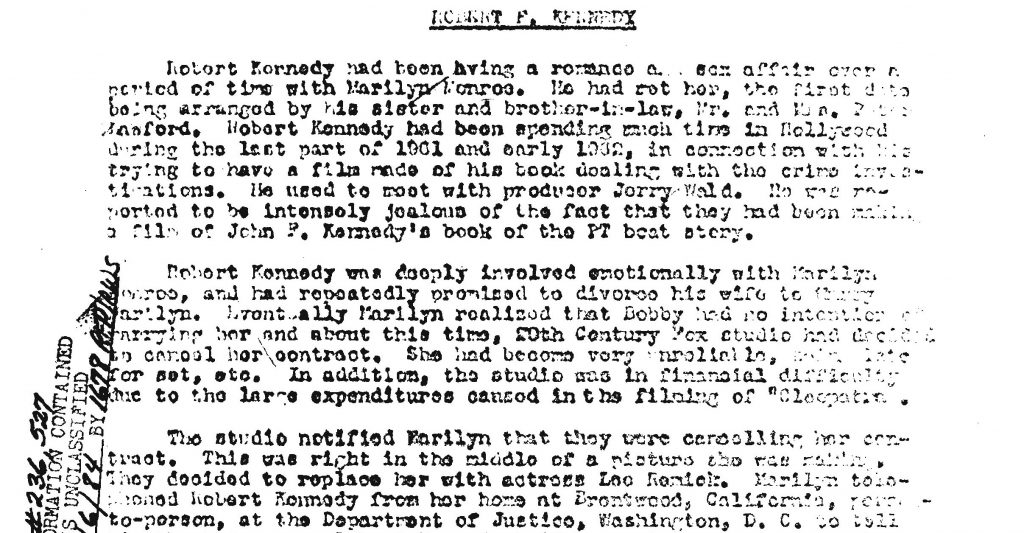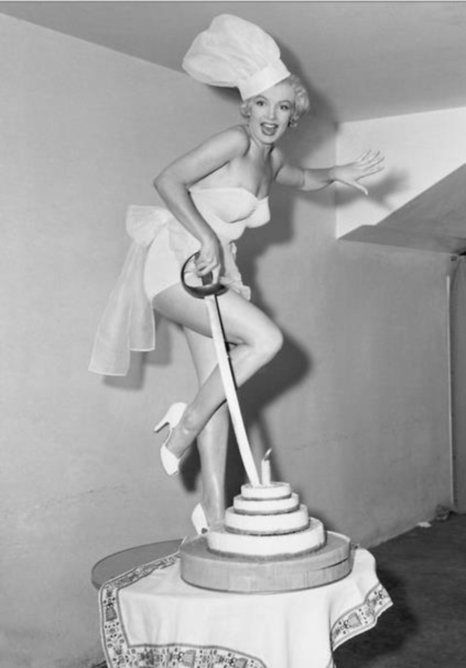Iron Bob, Big Jim and Eduardo
Samir Muqaddin asserted that Marilyn Monroe was actually an intelligence operative, a spy operating for the Federal Bureau and Central Intelligence. In her Little Red Diary, according to Muqaddin, Marilyn wrote that she was originally approached by a man to whom she referred as Iron Bob. Muqaddin identified Iron Bob as Bob Maheu, otherwise known as the American James Bond. Both Iron Bob, the man, and Iron Bob, an operative within the collective intelligence cabal in the United States, Marilyn’s spyboys, wanted her to do something for America.
Born on October the 30th in 1917 in Waterville, Maine, Robert Aime Maheu, lived ninety years. On the same date as Marilyn’s death in 1962, Maheu died in Las Vegas, Nevada, in 2008. That he lived nearly ninety-one years is remarkable considering his often dangerous but always treacherous activities for the United States intelligence community. While attending Georgetown University in 1941, Maheu became an FBI agent. Initially posing as a Nazi sympathizer from Canada, Iron Bob infiltrated the German-American Bund through which he both collected pertinent intelligence while disseminating misinformation to Nazi spies. Later during the war, he became involved with counterintelligence in Europe where he infiltrated Germany’s spy network and, once again, compiled intelligence while disseminating misinformation.
Maheu left the bureau in 1947 and founded Dairy Dream Products, a business venture that ended in bankruptcy court five years later. In 1952, he became the Security Director for the Small Business Administration; but he was forced to resign. He founded a private investigating and consulting firm in 1954, Robert A. Maheu Associates, which brought him into contact with the CIA. According to his CIA dossier:
In 1954 Maheu received a Cover Security Approval from Central Cover Staff. Maheu was recruited by the Office of Security of the CIA to perform certain operational support activities: He was initially recruited by the Office of Security in 1954 and granted a Provisional Operational Approval on August 30, 1954. He performed many sensitive Office of Security assignments and also accepted assignments from elements of the Deputy Director for Plans.
In 1955, Maheu met Howard Hughes; and because of Maheu’s intelligence expertise, the eccentric billionaire hired Iron Bob to investigate Max Showalter, an actor who the billionaire believed was romantically pursuing Jean Peters, Hughes’ actress fiancé at the time. Both Showalter and Peters costarred with Marilyn in the movie, Niagara. Due to Hughes fascination with counterintelligence, and his germ phobias, Maheu became Hughes’ liaison and directed the billionaire’s Las Vegas operations, a position that brought the private investigator and espionage expert into contact with the MOB and Johnny Roselli.
Fast forward 18 years. In May of 1973, then CIA director James R. Schlesinger signed an executive order directing senior staff members to compile an illegal activities report that covered the years from 1959 until 1973. Schlesinger’s order was written in response to newspaper articles and television reports concerning the CIA’s alleged involvement in the Watergate scandal. William Colby succeeded Schlesinger as director of the CIA later that year; so the loose-leaf book of memoranda and reports complied under Schlesinger’s executive order became Colby’s headache. Colorfully known as the “Family Jewels,” the CIA did not release the documents in 1973, although certain controversial gems from them leaked occasionally, both to the press and the television networks.
On the 30th of July in 1975, Robert Maheu testified before the post-Watergate Church Committee, formally known as the United States Senate Select Committee to Study Governmental Operations with Respect to Intelligence Activities, a senate committee chaired by the Democrat senator from Idaho, Frank Church. The committee held hearings and investigated various illegal activities perpetrated by agents of the intelligence community. Maheu admitted that he was involved in organizing the failed Bay of Pigs Invasion and a failed CIA plot to assassinate the Cuban dictator, Fidel Castro.
Fast forward 15 more years. In 1992, the National Security Archive, an independent research institute, filed a FOIA request with the CIA asking for the “Family Jewels” to be released. The CIA responded to that FOIA request; their response just required fifteen years to arrive. Finally, in June of 2007, the CIA released 693 pages of its declassified documents pertaining to the agency’s illegal activities, both domestically and off-shore. Their release included a cover memorandum, prepared by the director of security for the CIA at the time, Howard Osborn.
The cover memorandum is a summation of the jeweled compendium’s purpose along with a listing of eight specific jewels declaring various activities that violated the agency’s charter. This introductory information consists of eleven pages, three of which are completely blank. The first jewel on Osborn’s list, however, had been redacted along with its supporting documentation, some three and one-half pages worth. The second jewel on Osborn’s list of jewels involved Robert Maheu and the CIA’s plans to assassinate Fidel Castro using members of the MOB and American organized crime.
According to jewel number two, in August of 1960, the CIA contacted Maheu and asked if he could develop an entrée into the gangster elements as the first step toward accomplishing the desired goal, which was the assassination of Castro. Maheu mentioned an acquaintance, Johnny Roselli, a high-ranking member of the “syndicate”. Roselli believed that Maheu was just an organizational executive. Maheu approached the mobster and detailed a cover story involving foreign business interests that were suffering heavy financial losses in Cuba as a result of Castro’s actions. Castro had ejected the MOB from Cuba, which then interrupted the cash flow from prostitution, gambling and other vices. The foreign businessmen believed, Maheu told Roselli, that the dictator’s elimination was the only real solution to their problems; and they were willing to pay $150K to have Castro whacked.
Initially, according to this family jewel, Roselli refused involvement; but eventually, due to Maheu’s persuasive entreaties, Roselli agreed to introduce Maheu to Sam Gold, eventually identified as Sam Giancana. Later in September at the Fontainebleau Hotel in Miami Beach, Maheu and James O’Connell, CIA Operational Support Chief, who the mobsters believed was Maheu’s employee, met Giancana and another man introduced as only Joe, later identified as Santo Trafficante, Jr. During that meeting, Maheu outlined the Castro assassination plan for Giancana and Trafficante.
The mobsters agreed to participate and involve the Cuban Exile Junta along with various Cubans, who wanted Castro dead; but each of the mobsters indicated that they did not expect to be paid for their involvement. Due to various problems that developed with the plan, but primarily the Bay of Pigs fiasco, the CIA canceled the operation. Obviously, then, the United States intelligence community in the form of the CIA wanted to, and planned to, assassinate Castro. At that time, though, John Kennedy had not been elected President of the United Sates.
Of additional interest are three points also mentioned in this Family Jewel: 1) no one in the federal government could know about the operation and although various CIA personnel participated in the planning, they did not know the purpose of the operation; 2) none of the mobsters involved received payment from the CIA; and 3) Giancana made an odd request regarding his girlfriend at the time, singer Phyllis McGuire.
As the end of 1960 approached, after Maheu had finally enlisted the assistance of mobsters in the plot to assassinate Castro, a whisper involving a furtive relationship between Phyllis McGuire and the comedian Dan Rowan reached Giancana’s jealous ears. Rowan was a headliner in Las Vegas at the Riviera Hotel’s nightclub at that time.
Not only was Dan romantically pursuing the youngest McGuire sister, Phyllis appeared to be succumbing to Dan’s advances; and the two entertainers were becoming more than friends. Also, the whisper in Giancana’s ear included Rowan’s stated intent and plans to marry Phyllis McGuire. The rumor concerned Giancana enough that he asked Maheu to tap Rowan’s telephones and bug his room so the mafia don could determine the depth of the friendship shared by the two entertainers and the seriousness of Dan’s marital plans. Maheu agreed to Giancana’s request; however, all did not proceed as planned. The hotel discovered the eavesdropping devices and notified the local sheriff’s department, which resulted in the arrest of those involved. Eventually, the local authorities notified the FBI of the illegal wiretapping incident; but a question arises: considering that Giancana, according to virtually all of Marilyn’s Murder Orthodoxies, would later engage every known wire tapper on Earth to eavesdrop on Marilyn, listen to and tape record her telephone conversations and her love-making activities with the middle Kennedy brothers, why did the gangster need the CIA and Robert Maheu to provide eavesdropping devices and illegally tap Rowan’s telephone? Giancana had the infamous Fred Otash and Bernard Spindel at his disposal, two eavesdropping experts who appear prominently in Section 10. Those famous eavesdroppers would not have been caught in the act, caught eavesdropping on Dan Rowan. Why not engage one or even both of those eavesdropping experts and legends?
The FBI investigated the Rowan–McGuire–Giancana eavesdropping incident throughout 1961 and into early 1962. It is unclear when and from who the Justice Department learned of the bugging incident; but according to the Family Jewel:
Subsequently, the Department of Justice announced its intention to prosecute Maheu and the technician. On 7 February 1962, the Director of Security briefed the Attorney General, Robert Kennedy, on the circumstances leading up to Maheu’s involvement in the wiretap. At our request, prosecution was dropped.
It is not known exactly what the CIA’s Director of Security, Colonel Sheffield Edwards, told Robert Kennedy during their meeting; but I interpret the preceding this way: prior to the 7th of February in 1962, Robert Kennedy did not know anything about the Maheu instigated plot to murder Fidel Castro, an act of subterfuge that angered the attorney general; but according to Maheu, Edwards informed Robert Kennedy that mobsters Roselli, Giancana and Trafficante had been involved, a fact which angered the attorney general even more since Giancana and Trafficante both appeared on the attorney general’s top ten most wanted list; and both the CIA and the FBI recognized those mobsters as two of the most powerful men in the MOB.
Considering Robert Kennedy’s frontal assault on organized crime, the Maheu incident provided the perfect opportunity for the attorney general to arrest and prosecute all three of the involved mobsters. However, Robert Kennedy neither arrested nor prosecuted either criminal at that time, certainly because doing so would have exposed the machinations of the CIA and that agency’s involvement with the MOB; however, the plots to assassinate Castro were allowed to continue provided the CIA kept the attorney general informed.
Roselli used the damaging information that he obtained in 1960 regarding the CIA’s illegal activities in an attempt to avoid deportation in 1970: he threatened to expose the CIA’s Castro assassination attempts. According to the family jewel, the CIA decided not to assist Roselli and the immigration department began deportation proceedings. They planned to deport Roselli to Italy; but that country, along with several others I might add, declined to accept him: they considered him to be an undesirable. Ultimately, the Department of Immigration and Naturalization allowed Roselli to remain in the United States.
Apparently Robert Maheu looms large in the legends of Howard Hughes, Las Vegas, the Bay of Pigs Invasion and the CIA’s plots to assassinate Fidel Castro. Additionally, in the opinion of editor Brian Greenspun, president of the Las Vegas Sun, Bob Maheu was instrumental in the transformation and success of Las Vegas and without Maheu’s efforts Las Vegas would have become a different place. In Greenspun’s estimation, Maheu was instrumental, with the aid of Hughes’ millions, in ridding Las Vegas of mob influence. Still, Maheu also delivered bribes to politicians for Hughes, including presidents Lyndon Johnson and Richard Nixon: Maheu allegedly paid $1M each to Nixon and Johnson from Hughes in order to end nuclear testing in southern Nevada. Maheu also exerted an influence on the cost of oil and the cost of gasoline, then and now, when he virtually destroyed Aristotle Onassis’ Jiddah Agreement with Saudi Arabia, an agreement that would have undermined US influence in the Middle East and cost ARAMCO, the American consortium of Texaco, Exxon, Mobil and Standard Oil, billions of USDs. According to legend, Maheu received the green light from then Vice-President Richard Nixon to assassinate Onassis with the following caveat: just don’t kill the bastard on American Soil.1“Robert A. Maheu: Dead at 90.” Ed Koch. Las Vegas Sun. 6 Aug 2008.
<http://jfkfiles.blogspot.com/2008/08/robert-maheu-dead-at-90.html>
Also according to legend, the Kennedys hated Onassis, particularly John, who considered Onassis nothing more than a pirate of the high seas, an incredible irony considering that Jacqueline Kennedy eventually married the shipping magnate despite the fact that her sister, Lee Radziwill, also wanted to marry Onassis. Additionally, according to rumor, a few years after Marilyn’s death, Onassis hired a private detective to investigate and prove that Robert Kennedy murdered Marilyn. The detective reported to Onassis that evidence confirming that possibility simply did not exist.
I have not read Maheu’s memoir Next to Hughes, published in 1992; so I do not know what secrets he may have revealed therein. However, I have read the declassified Maheu dossiers released by both the FBI and the CIA: Marilyn Monroe’s name did not appear.
I have also read The Family Jewels, the records of Maheu’s testimony to the Church Committee and the records of two depositions he gave regarding his involvement in the both the Bay of Pigs fiasco and the plots to assassinate Fidel Castro: Marilyn Monroe’s name did not appear.
I have read several articles about and interviews with Maheu, one of which was a lengthy interview, published in the November 2007 issue of Chicago Magazine, conducted by Bryan Smith. Neither Smith nor Maheu evoked Marilyn’s name. Additionally, neither Smith nor Maheu, not to mention the text of several obituaries that I read, noted that Maheu’s intelligence moniker just happened to be Iron Bob. In fact, I doubt that Maheu was actually called Iron Bob. That nom de guerre, I believe, was just an invention of the conspiracist, Samir Muqaddin, just like his invention of Marilyn, the intelligence agent whose handler was Robert “Iron Bob” Maheu, the superspy who never evoked the name of Marilyn Monroe. Not once.
From being an FBI agent during the years from 1947 until 1951, James O’Connell, identified as Big Jim by Samir Muqaddin, became an agent for the CIA and functioned initially as an investigator before rising to the level of an operational chief. He retired in June 1973. According to Muqaddin, Big Jim, an actual nickname of O’Connell’s, was one of the CIA’s spyboys who recruited Marilyn and suggested that she should do something for America, suggested that she should become a spy.
James McDonald, an attorney for the House Select Committee on Assassinations, deposed O’Connell in 1978 and questioned him about the 1960 CIA plots to assassinate the Cuban dictator. O’Connell stated that he was, at that time, the chief of the Operational Support Division, Office of Security, and became involved, as a result of the Castro assassination plots, with Robert Maheu, Richard Bissell, Colonel J.C. King and Johnny Roselli. During the deposition, McDonald did not invoke Marilyn Monroe’s name or ask O’Connell one question about Marilyn Monroe. So far as I know and could determine, O’Connell did not know and never met the Queen of Hollywood; and there is no verifiable evidence which even suggests that he recruited Marilyn for the FBI or the CIA.2Link to deposition:
<http://www.jfklancer.com/cuba/o-connell.html>
Samir Muqaddin identified Eduardo, one of the spyboys allegedly mentioned by Marilyn in her Little Red Diary, as E. (Everette) Howard Hunt, Jr., who began his espionage and intelligence career during WWII as a member of the Office of Strategic Services, the predecessor of the Central Intelligence Agency. Hunt acquired national and international fame as a member of President Richard Nixon’s Special Investigations Unit, commonly known as The Plumbers, who plotted and executed the Watergate burglaries. For his participation in Watergate, Hunt was convicted of burglary, illegal wiretapping and conspiracy, for which he was sentenced to prison; he served two years and nine months.
Hunt has been linked to virtually every type of nefarious intelligence activity which occurred during his career with Central Intelligence, from the cruel assassination of foreign leaders and dictators to the brutal assassination of President Kennedy. For example, CIA agent Marita Lorenz testified, during a deposition, that she, along with Frank Sturgis and several other CIA operatives, transported weapons from Miami, the assassination’s original location, into Dallas on November the 21st. While staying in a Dallas hotel, according to Lorenz, she met E. Howard Hunt, who handed Frank Sturgis an envelope filled with cash, payment for what she called the operation. At the time she was not aware that the operation involved murdering John Kennedy. Not long after Hunt departed, Jack Ruby appeared; but according to Lorenz, Sturgis did not hand a cash-stuffed envelope to Ruby. After Ruby departed, Sturgis drove Lorenz to the Dallas airport, from where she returned to Miami.
Several conspiracists have asserted that Hunt was one of the three tramps arrested and released by the Dallas Police on November the 22nd in 1963; however, analysis of the tramp photographs performed by experts resulted in a conclusion that Hunt did not materially resemble any of the hobos. Putatively, a CIA memorandum initialed by Richard Helms, Director of the CIA from 1966 until 1973, a memorandum also initialed by James Jesus Angleton, stipulated as fact that Hunt was in Dallas on November the 22nd. That significant memorandum, though, has never been produced. Additionally, in 1975, President Gerald Ford established a commission to investigate and report on the CIA’s activities within the borders of the United States. Ford’s investigative panel concluded that Hunt was in Washington, DC, not in Dallas, on the 22nd of November. Of course, the verity of the conclusions reached and reports published by that presidential commission have been questioned, primarily because the reports excluded any information on domestic assassinations except John Kennedy’s but also because Gerald Ford was a member of the original Warren Commission.3President Ford’s commission, the United States President’s Commission on CIA Activities within the United States, was actually directed by then Vice-President Nelson Rockefeller. The panel is often called the “Rockefeller Commission”.
On January the 23rd in 2007, Hunt died from pneumonia in Miami. Two of his sons, Howard Saint John and David Hunt, alleged that their father confessed to the following prior to his death: he was asked to participate in the planned assassination of John Kennedy. Hunt also asserted that he declined to get involved. Those two sons videotaped their dying father as he rambled about the Kennedy assassination. On the confessional videotapes, Hunt implicated many CIA agents in the murder of John Kennedy, including David Atlee Phillips, Cord Meyer, the ex-husband of Mary Meyer, who appears briefly in Section 9, along with Frank Sturgis and David Morales. According to Hunt, the chief conspirator was then Vice-President Lyndon B. Johnson. Johnson allegedly changed the assassination’s location from Miami to Dallas because he needed to exercise a certain amount of control over the assassination’s chaotic aftermath and the initial disposition of evidence.
Carol J. Williams, writing for the Los Angeles Times in 2007, noted that historians invariably agree on this fact: Hunt hated John Kennedy due to the president’s role in the failed 1961 Bay of Pigs invasion, which Hunt instrumentally helped to organize. However, Williams also noted that Hunt’s videotaped assassination conspectus provided only a hypothetical scenario of how events in Dallas might have unfolded, with Johnson atop a pyramid of rogue CIA plotters (emphasis mine). To questions posed by his sons during an odd quasi-interview videotaped by them, their father did not offer definitive answers, noted Williams. He answered using speculative phrases, observing that various named figures were possibly involved. […] None of the accounts provides evidence to convincingly validate that their father disclosed anything revelatory. Hunt’s widow and two of his other sons, Hollis and Austin Hunt, expressed incredulity over the story offered by sons Howard Saint John and David. The incredulous sons, along with their mother, accused the videographers of abusing their elder and moribund father, who they prodded, coached and coerced during his final months of life when his lucidity and cognition began to fade.4“Watergate plotter may have a last tale: Two of E. Howard Hunt’s sons say he knew of rogue CIA agents’ plan to kill President Kennedy in 1963.” Carol J. Williams. Los Angeles Times. 20 March 2007.
<http://articles.latimes.com/2007/mar/20/nation/na-hunt20/2>Bill Snyder, Hunt’s attorney, dismissed what Hunt stated on the videotapes as speculations which offered no real or verifiable evidence. Also, as noted by Williams, the Los Angeles Times examined and evaluated the materials offered by the two Hunt brothers as evidence to prove the validity of their story; but the newspaper deemed the evidence inconclusive. Still and all, some believe what Hunt alleged and some do not.
Hunt answered many questions when he sat for several depositions regarding his involvement with the CIA and that agency’s dark and illegal activities. During questioning, Hunt never, at any time nor under any circumstance of which I am aware or have been able to determine, evoked the name of Marilyn Monroe; and there is no verifiable evidence of any sort linking E. Howard “Eduardo” Hunt to Marilyn Monroe, despite what Samir Muqaddin alleged in his dubious memoir.



